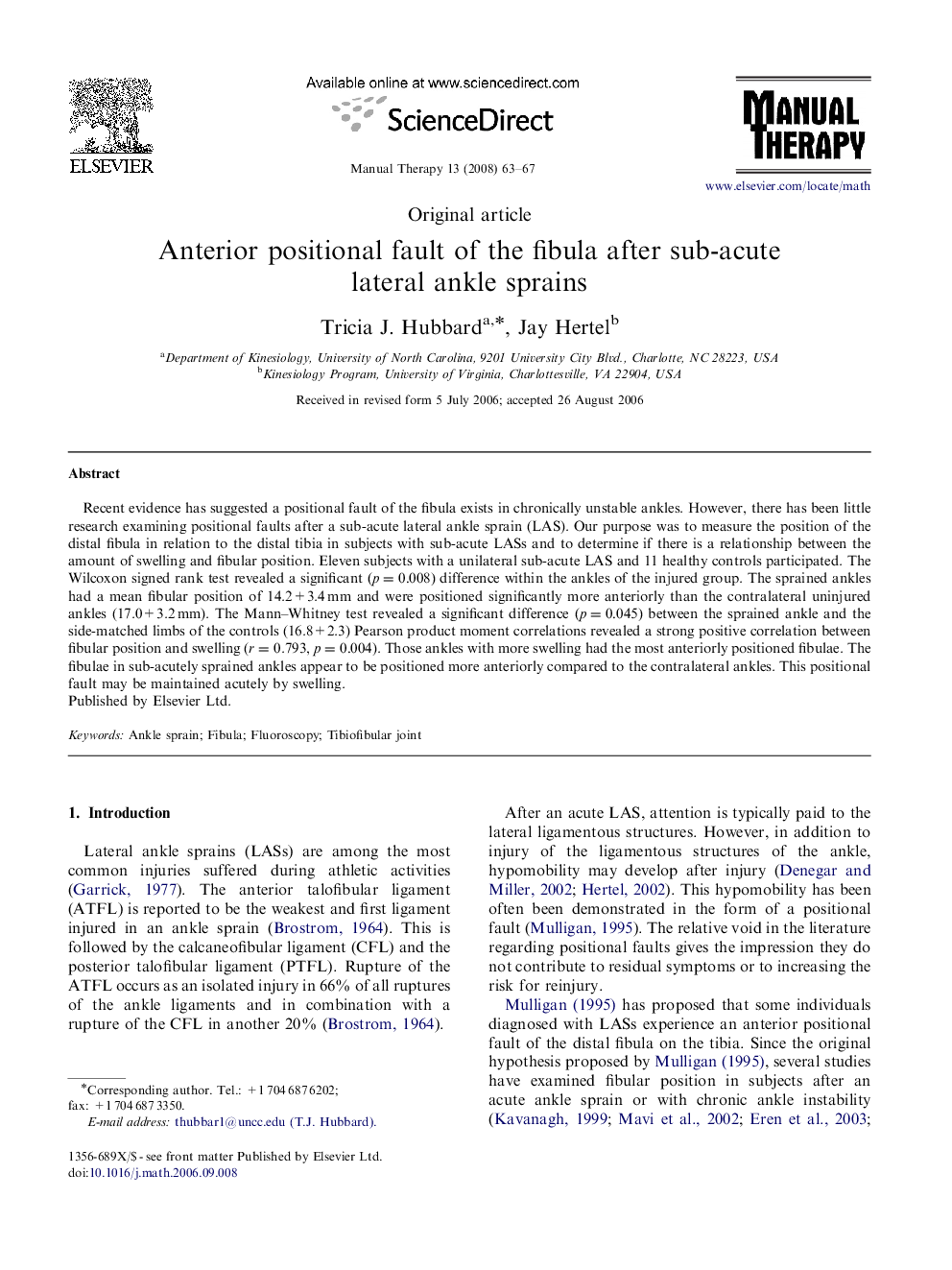| Article ID | Journal | Published Year | Pages | File Type |
|---|---|---|---|---|
| 2625669 | Manual Therapy | 2008 | 5 Pages |
Recent evidence has suggested a positional fault of the fibula exists in chronically unstable ankles. However, there has been little research examining positional faults after a sub-acute lateral ankle sprain (LAS). Our purpose was to measure the position of the distal fibula in relation to the distal tibia in subjects with sub-acute LASs and to determine if there is a relationship between the amount of swelling and fibular position. Eleven subjects with a unilateral sub-acute LAS and 11 healthy controls participated. The Wilcoxon signed rank test revealed a significant (p=0.008)(p=0.008) difference within the ankles of the injured group. The sprained ankles had a mean fibular position of 14.2+3.4 mm and were positioned significantly more anteriorly than the contralateral uninjured ankles (17.0+3.2 mm). The Mann–Whitney test revealed a significant difference (p=0.045)(p=0.045) between the sprained ankle and the side-matched limbs of the controls (16.8+2.3) Pearson product moment correlations revealed a strong positive correlation between fibular position and swelling (r =0.793, p=0.004p=0.004). Those ankles with more swelling had the most anteriorly positioned fibulae. The fibulae in sub-acutely sprained ankles appear to be positioned more anteriorly compared to the contralateral ankles. This positional fault may be maintained acutely by swelling.
